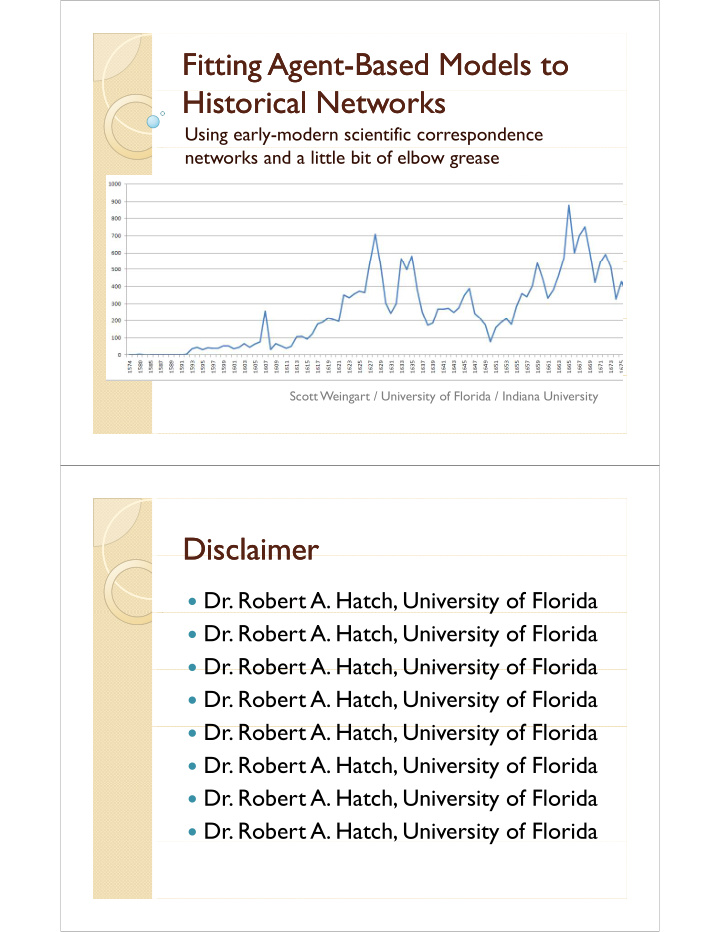



Fitting Agent Fitting Agent- -Based Models to Based Models to Historical Networks Historical Networks Using early-modern scientific correspondence networks and a little bit of elbow grease Scott Weingart / University of Florida / Indiana University Disclaimer Disclaimer Disclaimer Disclaimer Dr. Robert A. Hatch, University of Florida y Dr. Robert A. Hatch, University of Florida Dr Robert A Hatch University of Florida Dr. Robert A. Hatch, University of Florida Dr. Robert A. Hatch, University of Florida Dr. Robert A. Hatch, University of Florida D R b A H h U i i f Fl id Dr. Robert A. Hatch, University of Florida Dr. Robert A. Hatch, University of Florida Dr. Robert A. Hatch, University of Florida , y
Agent Roles Agent Roles [Chang & Harrington 2006] Agent Roles Agent Roles [Chang & Harrington, 2006] [Chang & Harrington 2006] [Chang & Harrington, 2006] Innovators – Highly productive in g y p generating new ideas Imitators – Highly productive in tato s g y p o uct ve identifying the ideas of others Regular Agents Moderately productive Regular Agents – Moderately productive at both activities Hierarchy of Roles Hierarchy of Roles [Chang & Harrington 2006] Hierarchy of Roles Hierarchy of Roles [Chang & Harrington, 2006] [Chang & Harrington 2006] [Chang & Harrington, 2006] Stable Environment ◦ Regular Agents learn from Imitators learn from Innovators Volatile Environment Volatile Environment ◦ Regular Agents learn from Innovators , Imitators become Innovators
Remarks on C&H’s Model Remarks on C&Hs Model Remarks on C&Hs Model Remarks on C&H’s Model Optimal ratio of Innovators : Immitators is somewhere between 7:3 and 4:6, depending environmental volatility d di i t l l tilit Agent-based models should easily A b d d l h ld il augment Grim’s & Payette’s epistemic nodal networks epistemic nodal networks (yesterday), Goldstone’s collective behavior models (spp) ( pp) Does it work? Does it work? Does it work? Does it work? Assign each scientist in Hatch DB g separate Innovator : Imitator scores based on contribution to a discipline p Score each year in scientific output (letters, publications, discoveries within a ( , p , discipline) Preliminary results show years with the Preliminary results show years with the highest output correspond to “sweet spot” Innovator : Imitator ratios spot Innovator : Imitator ratios.
Food For Thought Food For Thought Food For Thought Food For Thought “Sweet Spot” ratios shown to be an emergent property of stable environments Specially trained “between-group brokers” required to keep the sweet spot during volatility What happens when environment is Wh h h i i continuously and increasingly volatile, as with today? What property needs to change about today? What property needs to change about Imitators to allow them the speed required for Regular Agents to still follow them? g g Thank You Thank You
Recommend
More recommend